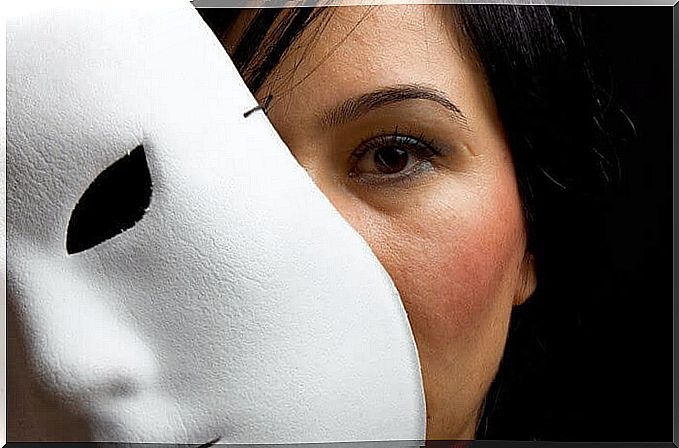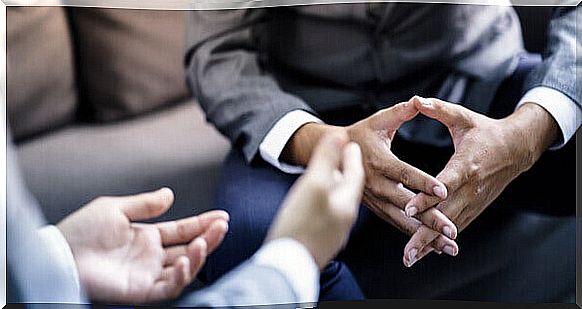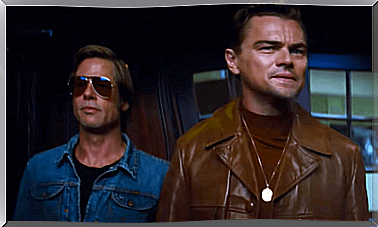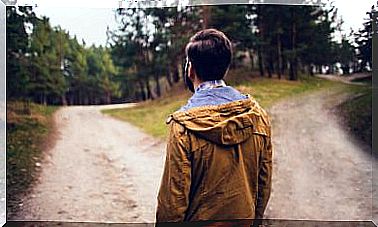You Lie! Your Body Language Gives You Away

Can we tell if someone is lying just by looking at their body language? Do our gestures and behaviors give us away? It is not always easy to know when the person in front of us is lying to us. We all remember the children’s story of “Pinocchio”, the boy who every time he told a lie, his nose grew bigger and bigger.
Although in real life it is not always so obvious to guess the lies, there are experts who help us solve this dilemma, that is, they indicate those situations most prone to our body language giving us away. Thus, the lie can not only be detected through spoken language. Observing those around us and studying their body language will allow us to discover people who are not being honest with us.
On the other hand, the truth is that we begin to lie at a very early age. The lie is a learned behavior and intrinsic to the human being. If the young child ends up learning that the reward for lying is greater than the one he gets if he tells the truth, the normal thing is that he risks delving a little deeper into that world of the invented, which apparently produces so many benefits.

Saying that you are sick on the day of an exam you haven’t studied, bragging about knowing a language when in reality you can barely understand it, attributing the delay to traffic. These are behaviors that we carry out every day, completely naturally.
5 gestures of our body language that give us away
The more we study the body language of those around us, the better position we will be to perceive those gestures that accompany their lies. Although there is no universal signal to detect lies, among the most common are these five:
Tendency to scratch the nose
The person who lies tends to rub his nose as a reflex action and involuntarily. The explanation for this gesture is that the increase in adrenaline secreted after lying, causes itching when it reaches the nasal capillaries.
The most famous example is that of Bill Clinton: he rubbed his nose when he denied his affair with Monica Lewinsky. So it was already interpreted as a sign that he was not telling the truth.
Body in rigid position
The muscles tend to tense and this causes the inability to control some tics, such as contraction of the shoulders or small spasms in the feet and neck. The physical expression is limited, with a tendency to stick the arms to the body.
On the other hand, when the person is sincere, the most natural thing is for them to be relaxed, their gestures to be reassuring and to express a relaxed body language. On the other hand, be careful when we interpret this rigidity: the tension may be derived from other circumstances. Either a concern that has nothing to do with what he is saying or the tension that the anticipation of our reaction to sharing the truth may generate can also generate rigidity.
Your breathing and heart rate accelerate.
The respiratory rate changes, you breathe more heavily. This causes the heart rate to change due to an abruptly altered respiratory rate. In this case, it would be good to also take into account what we have indicated for body stiffness.

Static gaze
Holding your gaze is an emotional protection. When we lie we place ourselves in a position of conscious vulnerability. Once said, the doubt can give us away, hence the rigidity in the discourse also usually transfers to the body, and logically, to our gaze.
Facial microexpressions
The blinking becomes more intense and frequent, with a tendency to rub our eyes. The cheeks begin to flush as a result of the increase in adrenaline, and the mouth and lips pucker up, indicating increased emotional tension.
Let’s think that the causes for which we lie can be many and very diverse, but they all have a common goal: we want to avoid telling the truth.
The body language evidence
Body language is a form of non-verbal communication. Through gestures and movements, we transmit the messages that we want to convey to our interlocutor. These actions are usually carried out unconsciously, which is why it is so difficult to concoct a lie and for our bodily gestures to be in line with what we want to express. That is to say, that our body accompanies our speech in the same way as when telling the truth.
On the other hand, as we have said, the interpretation of non-verbal language should be done with caution, since there are a multitude of environmental factors that can influence it. Imagine that you notice excess sweat on your interlocutor, you do not have to interpret it as a sign that he is trying to lie to you, it may be that the room where you are is excessively hot or that he suffers from hyperhidrosis.

To interpret non-verbal language, it is necessary to take into account the variables of the context, the background of the person, his character and the significance of what he is sharing through his speech. The ideal is to observe the body language as a whole and rule out possible external factors that can explain behavior and have nothing to do with the lie.









